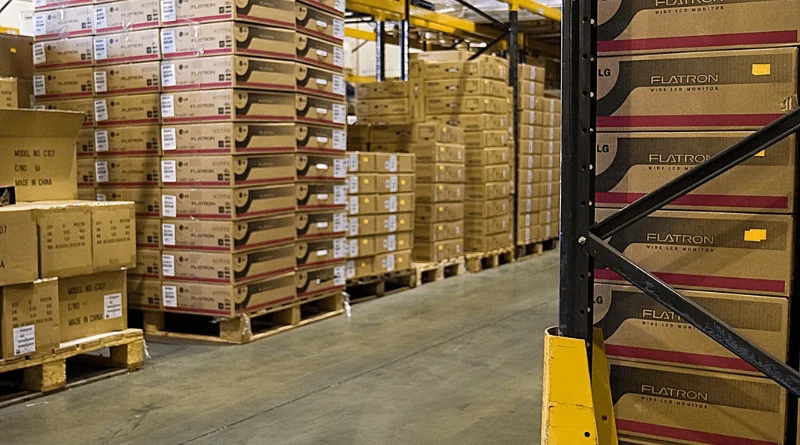In the fast-paced world of logistics and warehouse management, efficiency is the name of the game. Every inch of space matters, and optimizing your warehouse layout can make a significant difference in productivity, storage capacity, and ultimately, your bottom line. At the heart of this optimization lies the art of precision measurement, particularly when it comes to pallet racks – the backbone of any warehouse storage system.
Pallet racks are ubiquitous in warehouses worldwide, providing a structured framework for storing goods and materials. However, not all pallet racks are created equal, and their effectiveness depends on various factors, including their dimensions, weight capacities, and configurations. Achieving optimal warehouse management requires a deep understanding of these factors and meticulous attention to detail when measuring and selecting pallet racks.
Understanding Pallet Rack Dimensions
Before delving into the measurement process, it’s crucial to understand the different dimensions and components of pallet racks. Pallet racks typically consist of upright frames, beams, and wire decking. The height, width, and depth of these components can vary depending on the specific needs of your warehouse and the types of goods you’re storing.
- Height: The height of pallet racks is one of the most critical dimensions, as it determines the vertical storage capacity of your warehouse. When measuring rack height, consider factors such as ceiling clearance and the maximum height your forklifts can reach.
- Width: Rack width refers to the distance between two upright frames and determines the overall width of each rack bay. It’s essential to measure this dimension accurately to ensure compatibility with your warehouse layout.
- Depth: The depth of pallet racks corresponds to the distance from the front to the back of each rack. This dimension is crucial for accommodating different pallet sizes and ensuring proper load distribution.
Factors to Consider When Measuring Pallet Racks
Measuring pallet racks may seem straightforward, but several factors need to be taken into account to ensure accuracy and efficiency in warehouse management.
- Inventory Requirements: Before measuring pallet racks, assess your inventory to determine the types of goods you’ll be storing, their sizes, weights, and any special handling requirements. This information will help you choose the right rack dimensions and configurations to accommodate your inventory efficiently.
- Storage Density: Consider the desired storage density of your warehouse – the amount of storage space required per unit of inventory. High-density storage solutions maximize vertical space utilization, while low-density options provide easier access to individual items. Measuring pallet racks with the appropriate depth and height can help achieve the desired storage density.
- Clearance Requirements: Factor in any clearance requirements for aisles, fire codes, and safety regulations when measuring pallet racks. Leave adequate space between racks to allow for safe movement of personnel and equipment, as well as proper ventilation and emergency access.
- Future Expansion: Anticipate future growth and expansion when measuring pallet racks. Choose adjustable rack systems that can be easily reconfigured or expanded to accommodate changing inventory needs, rather than investing in fixed structures that may become obsolete.
Measuring Pallet Racks: Step-by-Step Guide
Now that we’ve discussed the importance of precision measurement let’s outline a step-by-step guide for measuring pallet racks accurately:
Step 1: Gather Tools and Equipment
Before you begin measuring, gather the necessary tools and equipment, including a tape measure, level, pencil, and notepad for recording measurements. If you’re measuring existing racks, consider using a laser measure for added precision.
Step 2: Measure Height
Start by measuring the height of each pallet rack upright frame from the floor to the top of the frame. Measure multiple points along the height of the frame to ensure accuracy, especially if the floor is uneven. Record the highest measurement, as this will determine the overall height of the rack.
Step 3: Measure Width
Next, measure the width of each rack bay by determining the distance between two adjacent upright frames. Again, take multiple measurements and record the widest dimension to accommodate any variations in frame alignment.
Step 4: Measure Depth
Measure the depth of each pallet rack by determining the distance from the front beam to the back of the rack. This measurement will determine the depth of each rack bay and should be consistent across all bays.
Step 5: Check for Levelness
Use a level to ensure that the pallet rack upright frames are plumb and level. Adjust the leveling feet as needed to correct any discrepancies and ensure the stability and safety of the racks.
Step 6: Consider Additional Accessories
If you’re planning to use wire decking or other accessories with your pallet racks, measure the dimensions of these components as well. Ensure compatibility with your rack system and account for any additional space requirements.
Step 7: Record and Analyze Measurements
Finally, record all measurements accurately and analyze the data to determine the optimal pallet rack configurations for your warehouse. Consider factors such as storage density, aisle width, and future expansion needs to make informed decisions.
Conclusion
Measuring pallet racks with precision is a critical aspect of warehouse management, with far-reaching implications for efficiency, productivity, and safety. By understanding the dimensions and components of pallet racks and following a systematic approach to measurement, warehouse operators can optimize their storage systems to meet the demands of their inventory and maximize available space.
In the ever-evolving landscape of logistics and supply chain management, the art of precision measurement remains indispensable. By mastering this art and leveraging it to design and implement efficient pallet rack systems, warehouses can stay ahead of the curve and maintain a competitive edge in today’s fast-paced business environment.

